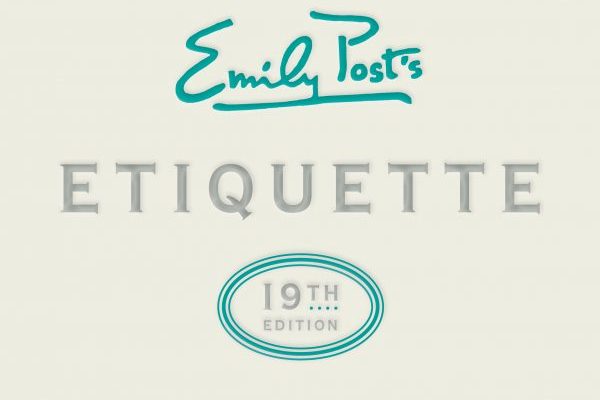While researching the cultural processes of inequality in community organizations, sociologist Andrea Voyer found that manners and etiquette often are noted in racial, ethnic, class and gender exclusion.
In studying a parent-teacher group in a public school, for example, white and wealthy PTA parents rejected the efforts of volunteers of poor and Latinx parents who they considered “rude.” And within an elite black church, more affluent church members determined that lower-income newcomers were “not the right kind of people” for the church based on their use of language and more casual dress sitting in the pew.
Such examples led Voyer to a new area of study.
“I realized that expectation of manners made it acceptable to judge and exclude in ways that were reproducing social inequality,” says Voyer, a research professor in the College of Liberal Arts and Sciences and an associate senior lecturer in sociology at Stockholm University. “As a result of that research I decided to study etiquette itself.”
Voyer is studying “Emily Post’s Etiquette,” the book written by the doyenne of manners first published in 1922 and currently in its nineteenth printing with the most recent update, “Emily Post’s Etiquette: Manners for Today,” published in 2017. The 19 editions include more than 7 million words and 90,000 pages of text. The research is supported by a two-year grant from the National Science Foundation.
Voyer is taking an innovative approach to the study of etiquette by utilizing the emerging research approach known as computational sociology, which uses computer science to study the social world. Computational sociology can take two major forms — big data analysis, which follows established models of social network structure and analysis by gathering as much information as possible; or a data science approach, which focuses on content analysis. Voyer is using the content analysis approach.
“By adopting a study of multiple editions of the same book what I get to do is look at exactly what changed, from edition to edition,” she says. “The benefit is that the research is almost like a panel study. Each time a new edition is written, it’s written in some relationship to the book that came before. When I see a change across editions, I can identify it much more easily but I can also try to find out where it came from.”
Voyer will have access to the archives of The Emily Post Institute, which the writer established in 1946 and has continued to publish new editions of the book by Post’s family since her death in 1960. Correspondence between Post and her publisher could provide insight on changes from edition to edition, Voyer says. The Institute has a website with etiquette information and programs for business, weddings and children. It also publishes etiquette columns and created the “Awesome Etiquette” podcast.
“The language [in the book] has changed, the structure of the book has changed but in addition to that the underlying ideas of manners have shifted as well,” Voyer says. “The biggest, most obvious example of that is that in the early books Emily Post begins with a discussion of what she considers a reference group that she calls ‘Best Society.’ The point of the book is to describe what the best people do so other people can learn and emulate that. Over the years what you see is the emergence instead of this idea that manners are for everyone and you don’t have to have some reference group that is the social elite of society; that there is this common sense courtesy and kindness. You see this happening over the course of the different editions of the book.”
In noting some of the changes in language over the years, for example, Voyer says in the 1922 edition of “Etiquette,” verb words used to discuss manners are the more rigid “can” and “ask,” while in 2011 the verbs change to the more flexible “allowed” and “permitted.” The guidelines for smoking for “gentlemen” and “ladies” in locations such as “ballroom,” “table” and “drawing room” appear throughout the first edition of the book, along with indications for the time and place for smoking. In more recent editions, there are more definite circumstances in which smoking is allowed or permitted.
Voyer says using this approach to research in social sciences was not an option during her training as a scholar so she has attended seminars to learn how to utilize the methodology to both explore new areas of research and transfer knowledge to graduate students assisting her with her research.
“One of the great things I’m excited about with this research is providing the opportunity for students to get trained in this approach and gain facility in computational sociology,” she says. “It’s my hope that there will be students who will want to do substantive work with their own questions.”



